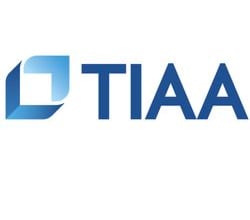For more than a year and a half, businesses have been operating in emergency mode. Company leaders, HR and employee relations (ER) professionals, operations executives and down the chain to frontline managers and employees have done what they had to do to keep businesses going during the pandemic. Over that time, the concept of what the “new normal” would look like kept evolving.

HR leaders will need to solve that problem before hybrid workplaces can work for everyone. Data from the HR Acuity Manager Survey conducted earlier this year revealed the scope of the challenge, and further analysis suggests some solutions HR and ER leaders can consider to ensure a successful transition to a hybrid workplace, where managers will be the key to success.
What Managers Said About Handling a Hybrid Workforce
Most frontline people leaders — 65% of more than 600 surveyed — say they find it more difficult to manage issues in a hybrid workplace model. One manager who responded put it this way: “I can’t emphasize enough the difference between office work complaints and remote complaints.”
The specific challenges people leaders cited the most included lack of in-person or face-to-face interaction between managers and employees, difficulty monitoring and tracking time and behavior on the job, process changes, issues with phone and video calls, lack of access to documents and the inability to print and sign documents.
Moving to a hybrid model is a big adjustment, so it’s understandable that some are struggling. But employee relations issues like harassment, proximity bias and DE&I must be handled with integrity to create trust. Emerging problems can look different in a hybrid or remote work structure, so managers will have to learn how to receive and interpret signals in a new way.
People leaders will require training and technology tools to help them successfully make the transition to a hybrid workplace. But the upside for that investment is potentially huge because better manager performance can directly improve employee satisfaction, and better visibility and predictive data at scale can increase executive confidence in the company’s employee relations team.
What the Findings Suggest About a Prescription for Positive Change
Because of the unique role they play in shaping the employee experience, it’s essential to give managers the support they need to overcome hybrid workforce challenges. The HR Acuity Manager Survey indicates that the right technology can play a pivotal role.
The research found that 93% of people leaders currently use unscalable, risky methods like spreadsheets and email to document and track employee relations issues. That’s unacceptable because this practice silos vital data that should instead be centralized and analyzed to improve results. It also puts highly sensitive and confidential employee data at greater risk of exposure.
When companies replace inefficient manual ER tracking methods with purpose-built technology that guides managers every step of the way, the business can reduce risk exposure and increase consistency across the board. Unlike manual methods like spreadsheets and email, technology that helps managers handle ER issues is scalable across the organization, which amplifies the impact of the investment.
Maybe that’s why the survey found that leaders at organization that use tech-based ER issue tracking methods were 21% more confident that their managers have the skills they need to handle employee issues effectively. Pivoting to more reliable, streamlined and consistent documentation and tracking methods makes handling ER issues easier for managers and improves HR leaders’ confidence too.
Manager Success = Hybrid Workplace Success
Even in the pre-pandemic “normal” environment, many managers weren’t comfortable addressing people issues, and as a consequence, some tended to avoid it. That’s not an option for companies that want to compete for the best employees by offering a great experience. Technology tools designed from the ground up for managers can address that tendency by taking the ambiguity out of ER processes.
It’s understandable that managers would find it more difficult to deal with employee relations issues when some employees are onsite and others are working from home, but that makes it all the more important to provide the training and tools managers need. And with the right technology, the company gets valuable data that can help pinpoint hidden or emerging employee relations issues quickly.
With access to modern tools that provide employee history as context, deliver guidance on what steps to take and alert users when escalation is appropriate, managers will be better equipped to recognize and resolve issues appropriately. And when HR and ER professionals know issues are being handled fairly, consistently and in a compliant manner at the manager level, they can focus on higher value work. That’s how companies can ultimately achieve hybrid workplace success.




